Rameswaram Temple
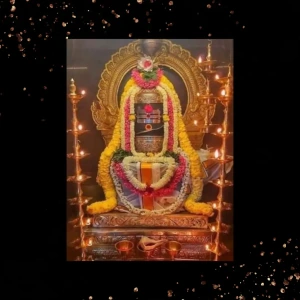
Rameswaram is an island.
It is in the southeast extremity of Ramnad, Tamil Nadu.
The town and temple are located in the northern part of the island.
Ramanathaswamy temple is one among the Char Dham and also a Jyotirlinga.
There are two Shiva Lingas in the temple of equal importance.
One was made by Seetha Devi from sand (sandstone).
The other was brought from Kashi by Hanumanji.
There are about 64 divine teerthas in Rameswaram.
They are in the form of wells, ponds, and spots in the ocean for taking bath,
Bathing in these teerthas is an important part of the pilgrimage to Rameswaram temple.
Rameswaram was originally known as Devanagaram.
The legend behind the name
Rameswaram is the meeting point of Mahodadhi (Bay of Bengal) and Ratnakara (Indian ocean).
The meeting can be seen at two places - Pamban and Dhanushkoti.
The Setu and the meeting of two oceans finds mention even in the Vedas.
द्वौ समुद्रौ वितताव् अजूर्यौ पर्यावर्तेते जठरेव पादाः ।
तयोः पश्यन्तो अति यन्त्य् अन्यम् अपश्यन्तः सेतुनाऽति यन्त्य् अन्यम्
- Krishna Yajurveda. 3.2.2
Rameswara means the Ishwara of Rama.
What is the story of Rameshwaram?
Srirama wanted to worship a Shiva Linga at Rameshwaram for success in his Lanka mission.
He sent Hanumanji to Kashi to get a Linga.
Seetha Devi made a Linga out of sand and Bhagawan started worshiping it.
Hanumanji came back with a Linga and insisted on worshiping it.
Bhagawan pacified him by installing both the Lingas known as Ramanatha and Vishwanatha.
Mahadeva is known as Rameswara, Ramalinga, and Ramanatha Swamy.
He is believed to have given Sri Rama belief from brahmahatya because Ravana whom he killed was a Brahmin.
History
The temple was originally a hut.
It was being looked after by a sanyasi.
King Parakramabahu of Lanka built a temple in 1173 CE.
This temple was dedicated to Nissankeswara and as a symbol of his gratitude for the victory over the Pandyas.
Sarva teertha was consecrated by Adi Sankaracharya.
Setu Madhava was originally known as Sveta (white) Madhava.
This idol is made from white coral stone.
Setupathys of Ramnad made great contributions to the development of the temple.
Udayan Setupathy constructed the main temple in the 15th century.
King Pararaja Sekhara of Sri Lanka provided the stones from Trincomalee.
Udayan Setupathy constructed the outer wall and the west gopuram with the intention of unifying Setu Madhava temple with Ramanatha Swamy temple.
Komiti Chettiyar of Nagoor also played a prominent role in this.
Statues of Chettiyar and his wife can be seen on the eastern wall.
Statues of Chinna Udayan Setupathy Katta Thevar and his son Krishnappa are also there near Nandi (1568 CE).
Tirumalai Setupathy and Regunathan Setupathy built the southern half of the second prakara.
The east gopuram and Sabapathi shrine were constructed by Dalavai Setupathy (1649 CE).
Dalavai Setupathy and Muthu Ramalinga Setupathy constructed the third prakara.
Structure of the temple
The high eastern gopuram of the temple can be seen from a distance.
The bay in front of the eastern gopuram is called Agni teertha.
The temple complex is 856 ft x 657 ft.
It is protected by a 12 ft wall all around.
The shrine of Parvatavardhini, the consort of Ramanatha Swamy is located near eastern Gopuram.
Rameswaram temple is famous for the long corridors inside the temple complex.
They are supposed to be the longest in the world.
There are also shrines of Vishalakshi (consort of Viswanatha), Ganapathy, and Vishnu (Setu Madhava).
Sannidhi for Utsava idols and Shayanagriha can also be seen.
Inside the temple complex are the two Lingas; one made by Lord Rama and Seetha made of sandstone and the other brought by Hanumanji from Kashi made of black granite.
The third prakara surrounds all the shrines of the temple complex.
The second prakara surrounds the shrines of Rameswara and Parvatavardhani Amman.
At the innermost level, there are different prakaras for different shrines.
The west gopuram which is closer to the town is mostly used to enter the temple.
Agni teertha is in front of the east gopuram.
7 important places in Rameswaram
Mount Gandhamadana - It is believed that Hanumanji took his leap towards Lanka from here.
On the way to the mount, there are small shrines and ponds named after important warriors of the Vanara sena.
There are temples here dedicated to Hanumanji and Vaali.
There is a two-storey mandapa on top of the mount.
The lower storey has the feet of Sri Rama.
It is from the upper storey of this mandapa that Hanumanji got his first glimpse of Lanka.
Devotees are supposed to stand here, look towards the south and imagine that they can see across the ocean the smoke coming from Ravana’s cremation pyre.
Bhagawan Rama had held a conference with the generals of the Vanara sena here before attacking Lanka.
Ekanta Rameswaram - This temple is mentioned in the Ananda Ramayana.
There are idols of Rama, Seetha, and Lakshmana inside the temple.
Bhagawan can be seen with one arm raised and talking to Seetha Devi.
Bhagawan held conferences here away from the sound of the waves.
There is a spring called Amrita Vapee (spring of immortality) here.
Ekanta Rameswaram is at a distance of 4 miles from Rameswaram town.
Nambinayagi Amman Temple - The Goddess of this temple is the protector of her devotees.
It is surrounded by sand dunes and Ketaki bushes.
Amman has got miraculous power to cure diseases.
Seetha Gundam - This is the place where Vedavathy, the previous birth of Seetha Devi immolated herself.
She was assaulted by Ravana.
Before immolating, she cursed Ravana saying that she would take birth again and cause his death.
Villuni teertha - This is a spring near Thangachimadam.
It is believed to have come out when Bhagawan Sri Rama pierced the ground with the tip of his bow.
Kapi teertha - This is near Pamban.
Bhairava teertha - This is also near Pamban.
Kodandaramar koil - Vibhishana was given refuge by Sri Rama here.
Idols of Rama, Seetha, Lakshmana, and Vibhishana are inside the temple.
The temple is located on top of a sand hillock in the middle of marshy land.
Setu Madhava temple
There was a Pandian king called Punyanidhi.
He and the queen found a beautiful girl wandering about at Dhanushkoti.
They took her to the palace and brought her up as their own daughter.
One day, a Sage walked into Rameswaram and took hold of the girl’s hand.
She cried out aloud.
The king imprisoned the Sage.
That night a dream occurred to the king.
He realized that the Sage and the girl were none other than Vishnu and Lakshmi.
He fell at the feet of the Sage.
Lord Vishnu agreed to be present in Rameswaram forever and bless those who bathe in the teerthas.
Navashakti Mandapam
The court held by the Goddess every Friday night is a unique and interesting feature of this temple.
This tradition was started by Raghunatha Sethupathi.
This is held in Navashakti Mandapam or Sukravara Mandapam.
After the daily puja is over, an announcer (Kattiyam) calls for recitations from the four Vedas, from the Tamil Thevarams, Tiruvasagam, Tirupallandu and also playing of various musical instruments.
She then proceeds in a gold palanquin to Ramanatha and goes thrice around the shrine accompanied by the chanting of Vedic hymns.
In the third prakara, when the procession reaches the statues of the Sethupathis, just in front of the Amman Sannadhi, the Kattiyam invokes Ganesha, Muruga, Brahma, Durga, Luxmi, Sarasvathi, and other Gods and Goddesses up to Chandesvari.
Then karpoora arati is done and the procession goes ahead.
In the second round, the palanquin stops again and Raghunatha Sethupathi is specially honored.
A silk turban is placed on the head of his statue, and garlands and pan supari are offered.
After the third round, the Kattiyam requests the Gods and Goddesses to go back to their own abodes.
Alangara deepam is offered and the Goddess is taken into the second prakara.
The procession consists of a horse and an elephant and camels, a band of drummers and musicians, and dancers followed by the officials of the temple.
As the procession returns to the gate of the Amman temple, a silver Vinayaka mounted on a huge silver mouse greets his mother, and receives her blessings.
Then the procession enters the Amman Sannadhi.
The bed-chamber (Palli-arai) is opened, and the divine couple is carried to their swinging gold couch.
The usual puja with Vedic hymns, Tamil songs, Neeranjana takes place, and Naivedyam is offered.
Worship
The puja takes place six times a day.
- Thiruvanandal Puja - 4 am to 5 am
- Udayamarthanda Puja at sunrise
- Kala Sandhi Puja - 9.00 am
- Uchikala Puja 12 noon to 1.00 pm
- Sayaraksha Puja at sunset
- Arthayama Puja around 9.00 pm
At 5 a.m, the Padasaiva or Ochan blows the conch in front of the Hanuman, thrice and strikes a gong.
This is repeated at all the other entrances also.
Musicians play in front of the temple.
The doors are opened.
The worship starts with abhisheka with milk to the Sphadika Linga kept in the Rameswara Garbhagriha.
After this, the silver image of the god is brought back from the bed chamber to the accompaniment of Veda Mantras, Thevarams, and musical instruments.
The formal abhisheka is done with 16 materials.
(1) Scented oil, (2) Lime juice, (3) Flour of green pulse, (4) Turmeric powder, (5) Wet cloth, (6) Panja-Gavya, (7) Milk, (8) Curd, (9) Ghee, (10) Panchamirtham, (11) Fruit-juice, (12) Honey, (13) Juice of sugar-cane, (14) Water of tender coconut, (15) Fragrant water, (16) Pure water. Punyahavachanam is performed for purification.
During puja, Dhupa - Naivedya - Tamboola - Deepa - Neeranjanam are offered in the order mentioned.
There are seven kinds of deepa:
- Ekamuka deepa
- Sapthasthana deepa
- Panchaseersha Naga deepa
- Rishabha deepa
- Purusha-mriga deepa
- Nakshatra deepa
- Kumba deepa.
After puja, bhasma is applied to the Linga and a mirror is shown.
Then an ornamental umbrella is held over the Linga for some time.
Chamara and fan made of peacock feathers are waved.
Then archana with 108 names is performed.
Then again Naivedyam and Neeranjanam are offered.
Naivedya is offered at all the shrines and Lingas inside the temple complex.
Vibhuti is given as prasada and Kumkuma in the Amman temple.
Homa is performed in the Yagashala.
This is the procedure up to the third Kalasandhi puja.
The Uchaikala puja is similar to the first puja.
Then the temple remains closed till evening.
Sayaraksha puja takes place at sunset followed by Arthayama puja.
Naivedyams
- Puttu
- Milk mixed with jaggery is offered in the worship before dawn.
- Rice cake - Dosai, Idli, etc.
- Athirasa-Sweet made of jaggery and rice flour.
- Mashapupa- Vadai.
- Various preparations of boiled rice with curries.
- Mudganna - rice and green gram dal
- Gudanna- jaggery, rice cooked in milk, and raisins.
- Payasam - Milk, pulse, rice, sugar, and spices.
- Puliyodharai.
- Plantain fruit and coconut.
Teerthas
According to Skanda Purana, all the divinities and teerthas are present in Rameswaram.
Outside Rameswaram island
- Devipatnam
- Darbhasayanam
- Chakra teertha
- Ksheera Gunda
- Ramand
- Papavinasa
- Vetalavarada
In the island
- Kapi teertha
- Bhairava teertha
- Villuni
- Seetha Kundam
- Rina Vimochana teertha
- Pancha Pandava teertha
- Mangala teertha
- Amrita Vapi
- Jati teertha
- Dhanushkoti
In Rameswaram town
- Rama Kundam
- Lakshmana Kundam
- Hanumath Kundam
- Brahma Kundam
- Agastya teertha
- Agni teertha
- Naga teertha
- Sugreeva teertha
- Vali teertha
- Gaja teertha
- Kumuda
- Anghada
- Jambhavan teertha
- Saratha teertha
- Bhima teertha
- Nakula teertha
- Sahadeva teertha
- Droupathi teertha
- Parasurama teertha
Inside the temple
- Mahalakshmi teertha
- Savitri teertha
- Gayatri teertha
- Saraswati teertha
- Ganga teertha
- Yamuna teertha
- Gaya teertha
- Surya teertha
- Chandra teertha
- Brahmahatya Vimochana teertha
- Sankha teertha
- Chakra teertha
- Sadyamrita teertha
- Sarva teertha
- Siva teertha
- Kodi teertha
- Madhava teertha
- Gandhamadana teertha
- Gavaksha teertha
- Gavaya teertha
- Nala teertha
- Neela teertha
Importance of the teerthas
Chakra teertha - Here the army of Sri Rama first halted before it crossed the ocean.
This was near Mount Mahendra.
Here Vibhishana met them.
Its old name was Dharma teertha.
Here Dharma did tapas to propitiate Siva and became his vehicle.
Here sage Galava did tapas and was blessed by Vishnu.
As the Chakra of Vishnu saved Galava from a demon here, it came to be known as Chakra teertha.
After bathing in this, King Udayana of Kousambi together with his queen and his favorite ministers became free from a curse.
They got back their forms as Gandharvas.
The temple has an idol of Rama stretched on a couch of straw.
Navapashanam (Devipatnam) - Durga Devi killed Mahishasura here.
This was the easternmost point of the island when Ram Setu was being constructed.
Sri. Rama set up nine stones for the nine planets in the sea at Devipatnam.
Hence the place is also called the Navapashanam.
Vetala Varada teertha - A Gandharva prince assaulted the daughter of Galava Muni.
He was cursed along with his brother.
Both of them got relief after taking bath here.
Papavinasa teertha - Sumati of Garga gotra attained moksha here.
Seetha Gunda.- This is near Thangachimadam.
All the holy waters of the earth reside here.
Siva also resides here to remove the sins of those who bathe here.
This teertha sprang up in the place where Seetha came out uninjured from the fire during Agni Pariksha.
Vedavathi, Seetha’s previous birth also immolated here.
Indra got relief from brahmahatya here.
Mangala teertha - Here Lakshmi resides.
All the Devas take bath here every day to ward off problems.
King Manojava of the Chadra Vamsha recovered his kingdom by bathing in this for three months according to the advice of sage Parasara.
Ekanta Ramanatha and the Amirta Vapi - This is where Lord Rama rested when the Setu was being constructed.
The teertha is called the Amirta Vapi because it gives immortality to one who bathes in it for three years.
The brother of the sage Agastya obtained moksha by doing this.
Lord Siva blesses those who bathe here.
Brahma Kundam - Here Brahma performed Yajnas to free himself from the curse of Siva for his sin of telling lies.
Hanumat Kundam - This was made by Hanumanji for the use of the Vanara sena.
King Dharmasaka performed Putrakameshti here and obtained a hundred sons.
He also performed tapas here and was granted moksha by Lord Shiva.
Agastya teertha - This is where Agastya and Lopamudra reside permanently.
They received darshana of Shiva and Parvathy in their marital decorations here.
Rama teertha - Yudhishtira took bath here for a month instructed by Sage Vyasa in connection with the sin of killing his Guru in Kurukshetra war.
Suteekshna, a disciple of Agastya did tapas here and obtained several siddhis.
Lakshmana teertha - Balarama purified himself of brahmahatya after killing Suta in a fit of rage.
Jatai teertha - Sri Rama washed his jatai (matted hair) here after killing Ravana.
Bathing here confers purity of mind and knowledge.
Lakshmi teertha - Krishna instructed Yudhishtira to take bath here and he obtained the wealth needed for performing Rajasuya.
Kubera became the lord of treasures after bathing here.
Agni teertha - Agni Bhagawan brought Seetha Devi here after she proved her purity in Agni pariksha.
Sakra teertha - The arms of Surya Deva were damaged due to excessive offerings he received once in Indra’s yajna.
He became normal after bathing here.
Siva teertha - Siva plucked the fifth head of Brahma.
He was relieved from the sin after taking bath here.
Sankha teertha - Sage Sankha performed tapas here.
A Sage called Vatsanabha was performing tapas here.
Indra caused a heavy downpour to disturb him.
Dharma came in the form of a huge buffaloe and covered him.
He did not express his gratitude to the buffaloe.
Hence the Sage incurred sin.
He was relieved by bathing here.
Koti teertha - This was created by Lord Rama with the tip of his bow.
Ganga is perpetually present here.
Lord Krishna took bath here to absolve himself of the sin of having killed his uncle.
This bath should be taken only after completing all other baths.
Sadyamrita teertha - King Pururavas regained Urvashi after bathing here.
Sarva teertha - A Sage called Sucharita was unable to go on pilgrimages due to old age.
He prayed to Lord Shiva.
Shiva blessed him by bringing the presence of all teerthas here.
Dhanushkoti - An important place for worshiping forefathers.
Bhagawan Sri Rama was returning from Lanka after eliminating Ravana.
Vibhishana requested him to break the bridge at two or three places to prevent any invasion from the Indian subcontinent.
Bhagawan did so with the tip of his bow.
Dhanus means bow.
Koti means tip or end.
According to another legend, Sri Rama created Koti-teertha at Dhanushkoti by piercing the ground with the tip of his bow.
That’s how Dhanushkoti got its name.
Ashwatthama was relieved of his sins by taking bath here.
Ksheera Kundam - Vishwakarma made this teertha and Kamadhenu filled it with her milk.
There was a shortage of milk on earth.
Yajnas stopped because of this.
With the creation of this teertha, the situation became normal.
Kapi teertha - This was created by the Vanara sena.
Rambha got relief from a curse here.
Rina Vimochana teertha - By taking bath in this teertha, one is relieved of all debts.
Gayatri - Savitri - Saraswati teerthas - These were created for them to take bath during their tapas to propitiate Shiva.
Pancha Pandava teertha - The Pandavas performed yajna here for prosperity.
Deva teertha - Confers relief from sins and moksha.
Sugreeva teertha - Taking bath here confers the merits of Ashwamedha and Agnishtoma.
Why stones are floating in Rameshwaram?
When Nala and Neela started constructing the bridge from Rameshwaram to Lanka, the stones began to stink. Then Rama Nama was written on the stones. After that, the stones kept floating. It is due to the power of Rama Nama.
Festivals
- Mahashivaratri
- Vasantotsavam - May/June
- Ramalinga Pratishtai - May/June
- Thirukalyanam - July/August
- Navaratri
Timings
5.00 am to 1.00 pm
3.00 pm to 9.00 pm
Nearest Railway Station
Rameswaram
Nearest Airport
Madurai - 170 km
Local Transport
Auto rickshaws, taxis, public buses, private buses
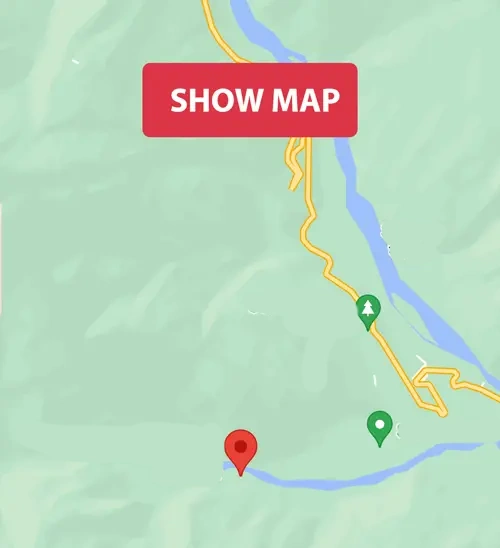
What is special about Rameshwaram temple?
Rameswaram temple is a Jyotirlinga installed by Sri Rama and Seetha Devi. There are a number of holy teerthas in Rameshwaram, a dip in which is spiritually purifying. Rituals to propitiate forefathers are also carried out at Rameshwaram.
Is it compulsory to take bath in Rameshwaram?
At Rameshwaram, many holy teerthas are available at one place. Even though it is not compulsory to take bath in them, pilgrims should make it a point not to miss this opportunity.
Quiz
Which God is in Rameshwaram temple?Recommended for you
Courage is very important in life
 Click here to know more..
Click here to know more..
Why Soma Juice Is Used In Yaga
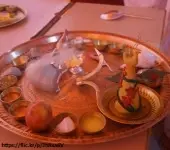
Do you know why Soma juice is offered in yaga? Click to learn....
Click here to know more..Prabhu Rama Stotram
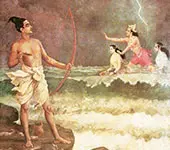
dehendriyairvinaa jeevaan jad'atulyaan vilokya hi. jagatah' sarjakam vande shreeraamam hanumatprabhum. antarbahishcha samvyaapya sarjanaanantaram kila....
Click here to know more..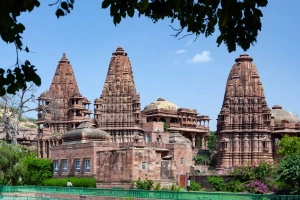
English Topics
Temples
Click on any topic to open
- 71 Ahobilam - Lord Narasimha's Sacred Abode
- 70 Malaikottai Temple, Trichy - Discover Spiritual Bliss
- 69 Jambukeswarar Temple, Trichy
- 68 Vaitheeswaran Koil - A Healing Pilgrimage
- 67 Dwaraka and Somnath
- 66 Khidkali Mahadev Mandir
- 65 Pongu Sani Temple, Thirukollikadu
- 64 The Unique And Fascinating Jharni Narasimhaswamy Temple, Bidar
- 63 Yamunotri: A Spiritual Haven in the Himalayas
- 62 Anantha Padmanabha Swamy Temple - Fascinating Legends
Please wait while the audio list loads..
30
Ganapathy
Shiva
Hanuman
Devi
Vishnu Sahasranama
Mahabharatam
Practical Wisdom
Yoga Vasishta
Vedas
Rituals
Rare Topics
Devi Mahatmyam
Glory of Venkatesha
Shani Mahatmya
Story of Sri Yantra
Rudram Explained
Atharva Sheersha
Sri Suktam
Kathopanishad
Ramayana
Mystique
Mantra Shastra
Bharat Matha
Bhagavatam
Astrology
Temples
Spiritual books
Purana Stories
Festivals
Sages and Saints
